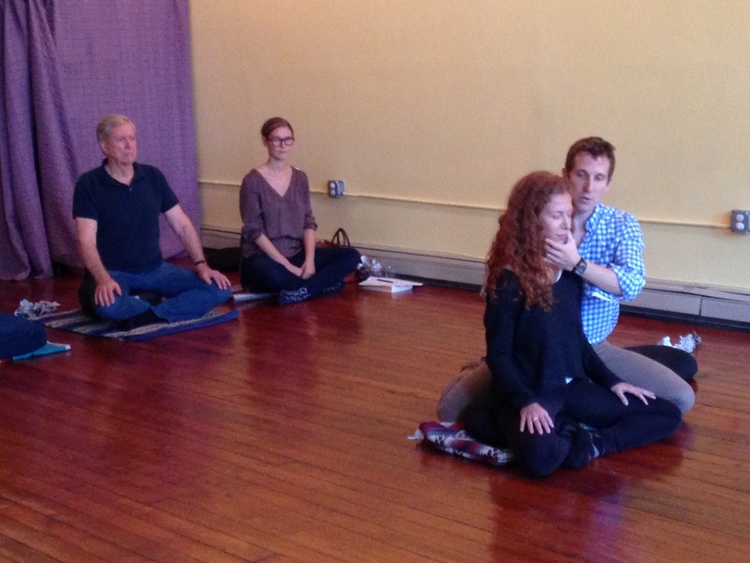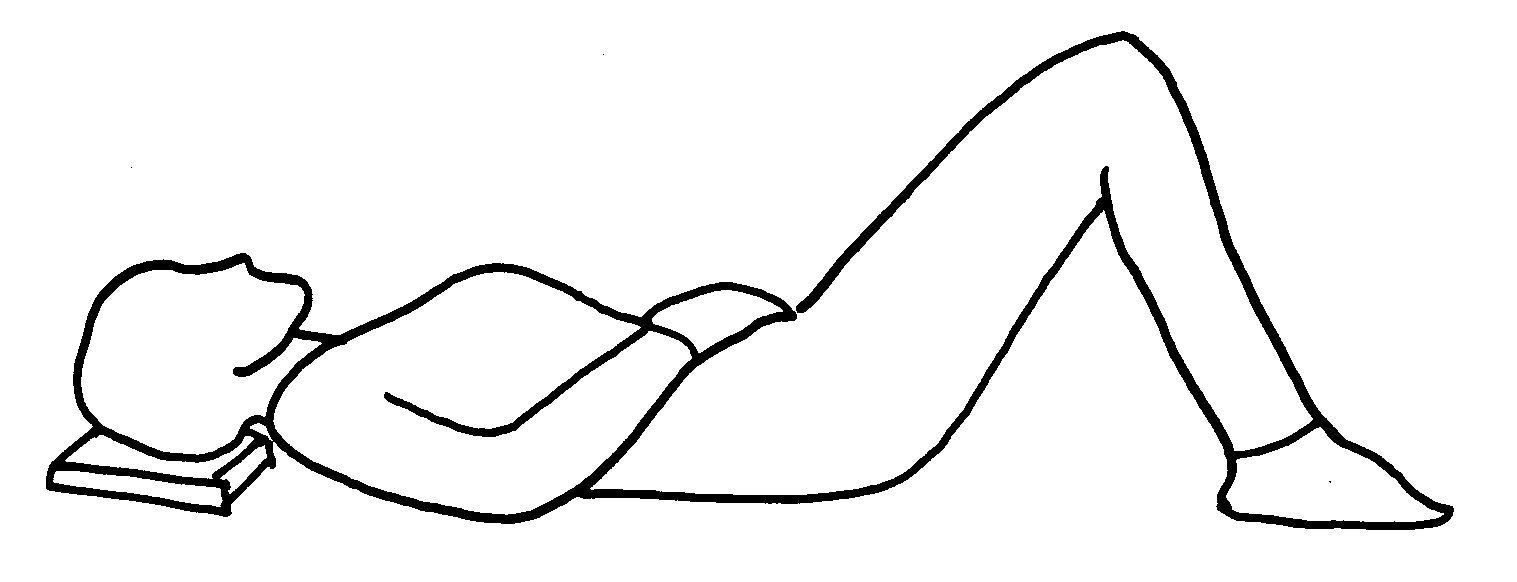by Cate McNider (originally puplished here)
Scoliosis, the lateral asymmetric deviation of the spine, is idiopathic. That means doctors don’t yet know or fully understand it.
Experientially, we know the causes are as varied as the people that suffer from it. Here’s a synopsis: Muscles pull bones, stimulated by messages sent from the nervous systems motor pathway, to animate the muscle fibers to contract or release. The messaging can also be a suspension of movement, as in holding the diaphragm from inhaling or exhaling. Repetition of such an action or non-action, over time, creates a pathway in the nervous system messaging, which then becomes a habit, which develops into a pattern.
The diaphragm is the nexus of the deviation for the upper and lower side of the spine to be pulled to the right or left in opposition. It’s a powerful trampoline-like muscle that encircles the base of the ribs, creating a boundary from respiratory and digestive systems, massaging both with each action, acting like a pump of sorts. It has anchors, tendons into the spine, the longer of the two on the right side. Over time, that right side anchor has more leverage to pull the upper body into a twist to the right. The lower body, meanwhile, seeks to balance the developing imbalance by pulling back, creating the S-curve. (I’ve found a C-curve to be more common—only one side majorly deviates the spine, usually the upper and again to the right.)
The body’s innate intelligence makes the best of a bad situation, ever attempting to maintain balance, especially to counter strong forces. The mind is the arbiter in shaping the body—how someone accepts a stimulus, or misunderstands a stimulus due to youth and inexperience, begins to shape how they see the world, and in turn shapes or misshapes the body. A force strong enough in an instant, or repeated over time, has the power to imprint itself on a growing spine into pulling it in opposing directions.
And that gets us to the shape of Tao: the light spot in the dark and the dark spot in the light. The spine is the divider of the duality of light and dark; apply a stimulus strong enough to deviate it from an upward balance of the two, and you have expressed a division of mind against itself. Beliefs taken literally by the body have colored the reality of what is true—they warp the frame of the skeleton receiving opposing messages.
There is a naturalness we all are born with, which is colored by our interpretations of our environments, family, culture, language and customs. We are not exactly a blank slate; we bring with us in our spirit knowledge that we will need for this life’s journey, and as we have to learn about where we find ourselves, because we don’t know yet, we make incorrect assumptions, and internalize messages that become the positions from where we act and speak, shaping our minds and thus our bodies. While nature provides all creatures with defensive attributes—the skunk’s pungent scent, the tiger’s sharp claws, the snake’s venom—we humans mostly have our minds to navigate the world and defend ourselves.
We feel before we have language. In our movement, synapses are made between the brain and the body. Our eyes lead us through developmental patterns, homologous, homolateral and contralateral into standing out of curiosity; our world expands and we expand upon our reflexes, into pushing, pulling and reaching. We have all five senses that inform us of our environment, plus the native and primary receptor of vibration, which is feeling. We all felt a situation before we had the language to understand it fully. We felt safe or unsafe. We were hungry or not hungry. We were cold or hot, wet or dry.
In these early years, the feeling groundwork is laid for later complexity. One person may perceive a stimulus as no big deal, but for another person it’s a pivotal event. That pivot, that moment of hinging is in the nexus of the length of the spine or its compression, and the width of the diaphragm or its contraction. This is the center line defining yin and yang, the left side being the feminine and the right being the masculine. Feminine is receptive, masculine is projective. Feminine is space and masculine is form; ergo, there is form in space and space in form. We breathe space (air) into us, drawn in by the diaphragm and pushed out by the diaphragm. Suspend this natural process with a shock and then repeatedly out of fear, and it can become an unconscious habit of withholding the inhale or exhale. Add the effect of the stimuli on the heart and you can have an emotional shutdown; the spine deviates from its support of the heart.
Our strengths and weaknesses are readily perceptible to one who sees and understands the language of the bodymindspirit. Yes, I mean that as one word. We are Tao, the whole circle, but when we swing from yin to yang, pulling ourselves apart by giving the mind power beyond our conscious control, it can become a switchback trail that we must retrace, undoing the misunderstandings, letting the spine untwist itself with every recognition.
For example, I was about 7 or 8 when my father said to me that "thinking is superior to feeling.” Whether he meant it as an order, a threat or a suggestion, it’s how I took it that created my future reality. I was standing at the top of the stairs, up from the front door, on the new white carpet, my hands on the railing, poised to make a decision that energetically would become a base of how I would interact in the family. I made a decision in that moment (I didn’t want to be ‘inferior,’ whatever that meant, since I was already competing with two older brothers) to follow what I thought he meant, which energetically resulted in evacuating my solar plexus, to my brain. Subsequent events further affected me and my body, which having shut down my feeling center could not support me and the forces were greater than my mind could process. The incoming information went out another pathway and was stored in the body’s tissue. Many other defining moments are what I have allowed for decades to unwind, returning my spine to an upward length and width, to wholeness.
If we take the time to understand this relationship of the mind and the body, we can significantly rewrite what will become our future. Understanding the past that has written itself on our body, we can undo the wires that unevenly hold the muscles in opposition. The muscles that are being held by the information messaged by the nervous system can also be messaged to unhold the information.
It’s a choice: Do you want to create yourself after a Picasso or a Modigliani, or do you want to be free to be you? Who is you? (That's not a grammatical error.) Are you in balanced opposition to gravity or are you suffering under the weight of your thoughts about what you think about reality? Remember, you create your body and your reality! Do you want to keep swinging back and forth on the Coney Island ride of suffering, or do you want to undo the lies you accepted so long ago, and discover how you really feel?! Allowing is the new doing.
(These mindbody truths hold whether you have developed scoliosis or not.)
Cate McNider has been working with the bodymind and spirit for 29 years. Through every stage of her healing and working with others through different modalities, she now finds the Alexander Technique, most actively helps others address pain and stress. She is giving online classes during this time of 'social distancing'. President of The Listening Body® has spent three decades in the Healing Arts — spanning Massage Therapy, Reiki, Embodied Anatomy, Yoga, Body-Mind Centering®, Contact Improvisation, Deep Memory Process® and more — and has further sensitized her instrument through the process of Alexander Technique. Her AT training represents the culmination of a lifetime of work and study and a springboard for future creations. Cate is also a painter and published. www.catemcnider.com and www.bodymind.training.















